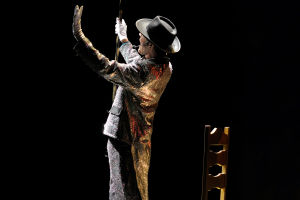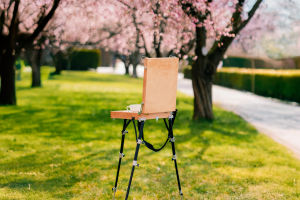When it comes to photography, light and shadow are not just technical elements—they are powerful tools that help convey emotion, drama, and depth.
Whether we're taking a portrait, a landscape, or even a street shot, light and shadow have the ability to transform an ordinary scene into something extraordinary.
Today, we'll explore how these two elements can be used effectively to evoke strong emotions in the viewer, creating a visual experience that goes beyond what the camera sees.
The Role of Light and Shadow in Photography
At its core, photography is all about capturing light. But it's not just about the amount of light or the brightness of an image—it's about how light interacts with the subject. Light can emphasize textures, highlight details, and create depth. Shadow, on the other hand, adds mystery, contrast, and a sense of drama to a photograph. Together, light and shadow create a dynamic interplay that gives photos their emotional depth and intensity.
We often think of light as something that makes images clear and visible, but it's shadows that shape the story of the image. A well-placed shadow can turn a mundane scene into one filled with intrigue or tension. This is especially true when we use light and shadow to express emotions or set a particular mood. Whether soft and subtle or harsh and dramatic, light and shadow add layers to the visual storytelling of photography.
Using Light to Evoke Mood
The direction, quality, and color of light can drastically alter the mood of a photograph. For instance, soft, diffused light (like during the golden hour) often creates a peaceful, nostalgic, or romantic atmosphere. On the other hand, harsh, direct light (like noon sunlight or strong artificial lights) can create stark contrasts and add a sense of urgency, tension, or even fear.
Photographers often manipulate light to communicate emotions that might not be evident in the subject alone. For example, a portrait illuminated by soft, gentle light can convey a sense of calm, while a portrait lit by dramatic, directional light can evoke mystery, strength, or even sadness. The emotional impact of a photograph is deeply tied to how the light interacts with the subject and the surrounding space.
The Power of Shadows in Storytelling
Just as light can evoke a feeling, shadows can create a story. Shadows can add depth and texture, transforming flat images into ones that feel more three-dimensional. More importantly, shadows help guide the viewer's eyes to the focal points of the image, making the photograph more engaging and visually dynamic.
One of the most common uses of shadow in photography is to create contrast. The interplay between light and shadow draws attention to specific features, enhances depth, and adds mystery. For example, a shadow that falls across a subject's face can hint at secrecy or conflict, while a shadowy corner in a street photograph can suggest loneliness or isolation. These subtle elements help convey emotions that words or facial expressions may not fully capture.
How to Balance Light and Shadow for Emotional Impact
Achieving the right balance between light and shadow is key to creating powerful emotional impacts in photography. Too much light and the image can look flat or washed out, losing its emotional depth. Too much shadow, and the photograph can become overly dark or hard to interpret, losing important details in the process.
The key is to experiment with the intensity, direction, and placement of both light and shadow. For instance, side lighting (where light hits the subject from the side) creates strong contrasts and depth, while backlighting can silhouette the subject, creating mystery or highlighting the shape rather than the detail. Similarly, shadows can be soft and subtle or sharp and dramatic, depending on how much contrast the photographer wants to create.
Practical Tips for Using Light and Shadow
If you're looking to experiment with light and shadow in your photography, here are a few practical tips:
1. Observe the natural light: Notice how light changes throughout the day. The golden hour (shortly after sunrise or before sunset) provides soft, flattering light that is perfect for portraits.
2. Use shadows intentionally: Experiment with how shadows fall across a subject, and see how they affect the overall composition. Don't be afraid to let shadows obscure part of the subject to create mystery.
3. Play with contrast: High contrast photos (where light and dark are separated dramatically) can add a sense of drama, while low contrast photos (where light and shadow blend more smoothly) create a softer, more subtle mood.
4. Experiment with artificial lighting: Sometimes, using artificial lights or reflectors can help manipulate both light and shadow in ways that wouldn't be possible with natural light alone.
5. Embrace imperfections: Shadows often bring a sense of imperfection and unpredictability, which can add authenticity and raw emotion to your work.
Conclusion: The Emotional Impact of Light and Shadow
Light and shadow are not just technical elements in photography—they are emotional storytellers that, when used correctly, can enhance the mood, narrative, and depth of a photograph. By carefully manipulating these elements, photographers can evoke a wide range of emotions, from joy and tranquility to tension and mystery.
We hope this article helps you see the beauty and potential in using light and shadow to capture emotions in photography. Have you ever been moved by a photograph simply because of the way light and shadow were used? Share your thoughts with us; we'd love to hear about your experiences.


